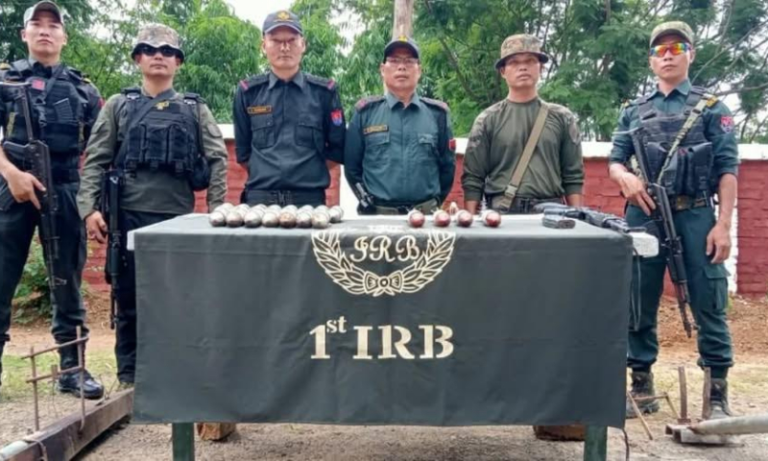Manipur’s Annual Imoinu Fish Fair Targets Record 80,000 kg Sale
Summary of the News Article
Manipur’s annual Imoinu Fish Fair, organized by the state’s Fisheries Department, is set to achieve a groundbreaking milestone this year. Scheduled for January 11 at Hapta Kangjeibung, the fair aligns with the sacred festival of Imoinu Iratpa. The event targets selling 80,000 kilograms of fish, a significant increase from previous years. This initiative not only supports local fish farmers but also celebrates the region’s cultural and spiritual connection to Goddess Imoinu. The fair also includes stalls featuring agricultural and horticultural products, showcasing the diversity and vibrancy of Manipur’s economy.
Manipur’s Imoinu Fish Fair: Blending Culture, Commerce, and Community
Introduction
Have you ever been to a place where tradition and trade seamlessly come together? That’s exactly what happens at Manipur’s Imoinu Fish Fair. It’s more than just a marketplace—it’s a celebration of culture, a platform for local farmers, and a cornerstone of economic activity. This year, the fair is making headlines with its ambitious goal of selling 80,000 kilograms of fish. Intrigued? Let’s dive in and explore what makes this event so special.
The Cultural Significance of Imoinu Iratpa
Manipur’s rich cultural heritage is beautifully reflected in the festival of Imoinu Iratpa. Dedicated to Goddess Imoinu, the deity of wealth, prosperity, and abundance, this festival is celebrated with fervor across the state. Families light traditional lamps and prepare special meals, with fish taking center stage on the menu.
Why fish, you ask? It’s a symbol of prosperity and a sacred offering to Goddess Imoinu. This makes the Imoinu Fish Fair not just a commercial event but also a spiritual celebration that complements the festival’s essence.
The Imoinu Fish Fair: A Vibrant Marketplace
Record-Setting Ambitions
The Fisheries Department of Manipur has truly raised the bar this year. By targeting the sale of 80,000 kilograms of fish, the fair is set to break previous records. From small fish varieties to the much-loved Sareng (Wallago attu), there’s something for everyone. Each fish, carefully sourced and displayed, reflects the hard work of local fish farmers.
Venue and Setup
Held at Hapta Kangjeibung in Imphal, the fair boasts over 120 stalls. These aren’t just limited to fish—visitors can also explore products from the horticulture and agriculture sectors. It’s a one-stop shop for everything fresh and locally grown.
Inclusive Participation
What’s truly heartwarming is the inclusivity of this event. Internally displaced persons (IDPs) have been given the opportunity to run their own stalls, ensuring they are part of this economic activity. This initiative highlights the fair’s role in empowering marginalized communities.
Empowering Local Farmers
Manipur’s fish farmers are the unsung heroes of this fair. Many of them come from remote districts like Kamjong, Ukhrul, and Chandel, bringing their unique produce to the city. For these farmers, the fair isn’t just about sales; it’s a chance to connect directly with consumers and gain recognition for their efforts.
The direct-to-consumer model eliminates middlemen, allowing farmers to earn fair prices for their hard work. It’s a win-win situation: farmers get better returns, and consumers enjoy fresh, high-quality fish.
A Celebration of Sustainability
The Imoinu Fish Fair isn’t just about quantity—it’s about sustainability too. By promoting local fish varieties and encouraging sustainable farming practices, the Fisheries Department is ensuring that the state’s aquatic resources are preserved for future generations. It’s a delicate balance between economic growth and environmental conservation, and Manipur seems to be nailing it.
A Cultural Extravaganza
Beyond the commerce, the fair offers a deep dive into Manipur’s traditions. Special stalls showcase items used in the worship of Goddess Imoinu, educating visitors about the rituals and their significance. It’s a beautiful way to keep traditions alive and pass them on to the younger generation.
Challenges Along the Way
No grand event comes without its challenges. Here are a few hurdles the organizers face:
- Logistics: Transporting 80,000 kilograms of fish and ensuring they remain fresh is no small feat.
- Quality Control: With such a large volume, maintaining quality across the board is critical.
- Competition: Balancing the interests of local farmers with the influx of external suppliers can be tricky.
Despite these challenges, the fair has consistently delivered, thanks to meticulous planning and community support.
Economic Impact of the Imoinu Fish Fair
The fair is a significant economic driver for the state. By facilitating direct sales, it eliminates intermediaries, ensuring better prices for both farmers and consumers. The ripple effect extends to related sectors like transportation, packaging, and retail, creating jobs and boosting the local economy.
For the farmers, it’s an opportunity to showcase their hard work and earn recognition. For the consumers, it’s a chance to access fresh, high-quality produce at reasonable prices. And for the state, it’s a testament to the power of community-driven initiatives.
Looking Ahead: The Future of the Fair
As the fair grows in scale and popularity, there’s immense potential for expansion. Imagine more stalls, diverse products, and increased participation from farmers across the state. The fair could even become a major tourist attraction, drawing visitors from outside Manipur to experience its vibrant culture and community spirit.
FAQs
- What is the Imoinu Fish Fair? The Imoinu Fish Fair is an annual event in Manipur organized by the Fisheries Department. It coincides with the Imoinu Iratpa festival and features the sale of fish and other local produce.
- Why is the fair significant? The fair celebrates the cultural and spiritual significance of fish during the Imoinu Iratpa festival while providing a platform for local farmers to showcase their produce.
- What is the target for this year’s fair? The fair aims to sell 80,000 kilograms of fish, breaking previous records.
- Who participates in the fair? Local fish farmers, horticulturists, agriculturists, and internally displaced persons (IDPs) participate, offering a wide range of products.
- How does the fair promote sustainability? By focusing on local fish varieties and encouraging sustainable farming practices, the fair helps preserve Manipur’s aquatic resources.
